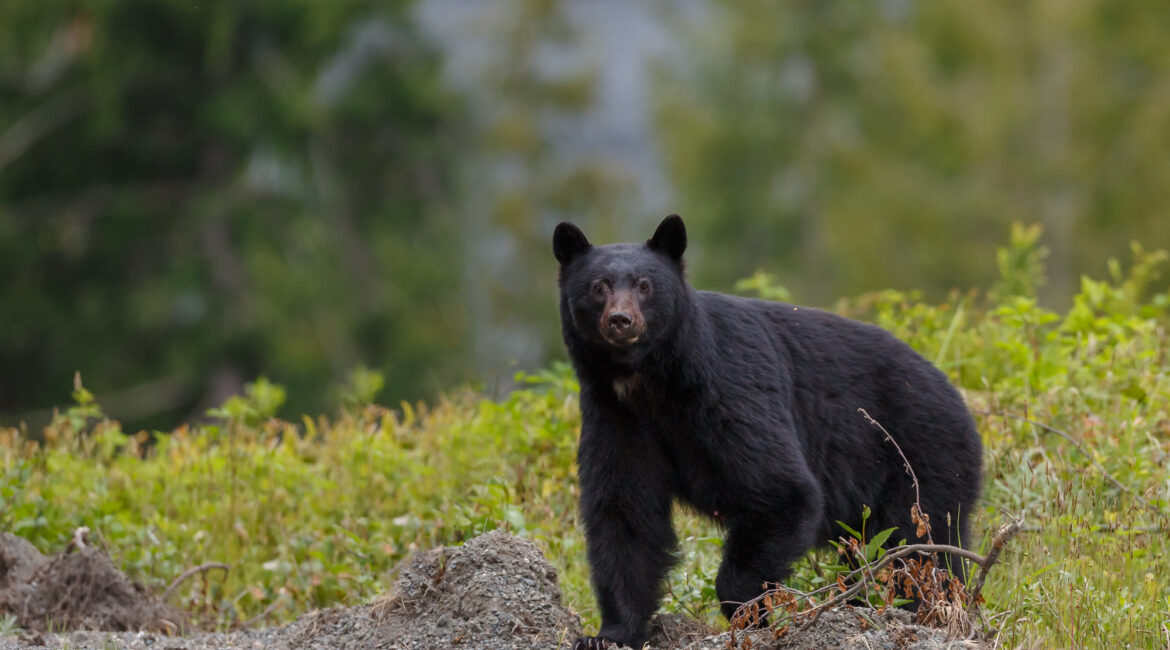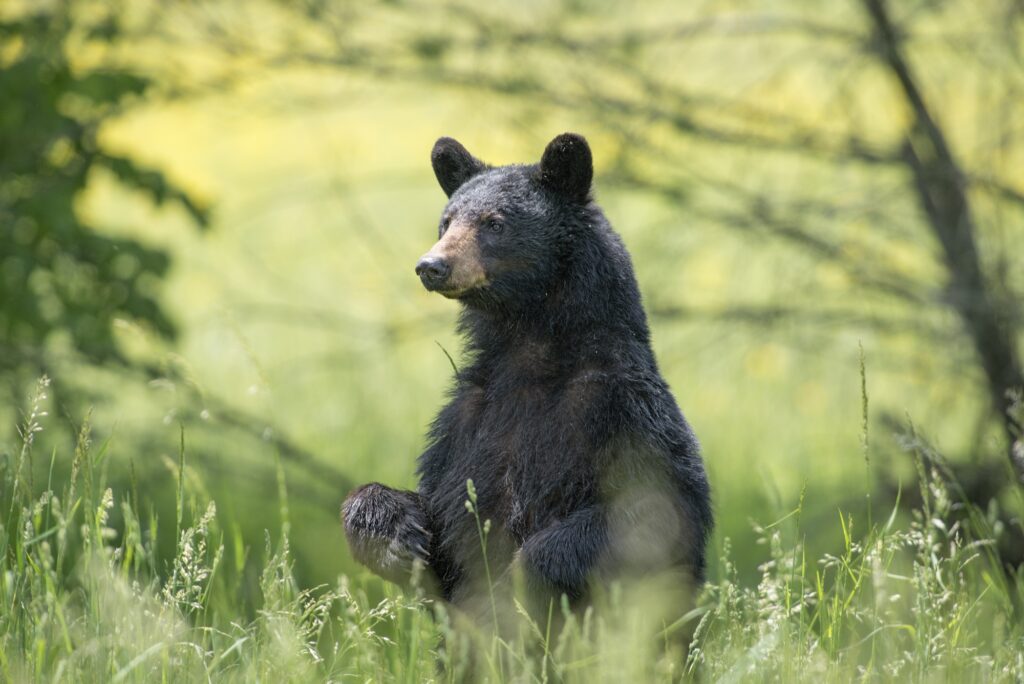

Black Bears of Eastern North Carolina
Eastern North Carolina is a region blessed with breathtaking natural beauty, and at the heart of its wild landscapes resides a fascinating creature that captivates both locals and visitors alike: the black bear.
As one of the largest and most iconic mammals in the area, black bears play a crucial role in the delicate ecosystem and have become an emblematic species of this diverse region.
North Carolina & Black Bears
The black bear, scientifically known as Ursus americanus, is the only bear species native to North Carolina. In North Carolina, the black bear is usually black with a brown muzzle and sometimes a white patch on its chest. Bears have five toes on each foot, with sharp curved claws that help them climb trees and feed on insects and grubs in decaying logs.
Black bears rely mostly on their sense of smell and hearing due to their average (similar to humans’) eyesight, but are adept at climbing, running, swimming and digging.
In eastern North Carolina, black bears are known to grow larger than in the mountain areas, with the heaviest black bear living in Craven County, weighing a record 880 pounds.
 Black Bear Habitat and Diet
Black Bear Habitat and Diet
Eastern North Carolina provides an ideal habitat for black bears, offering a combination of dense forests, swamps, and wetlands.
Black bears are omnivorous creatures with a highly adaptable diet. While they are opportunistic eaters, consuming both plants and animals, their diet primarily consists of vegetation. In Eastern North Carolina, their diet often includes berries, acorns, nuts, roots, grasses, and occasionally fish or small mammals.
Autumn is the time of year when bears gain weight in preparation for winter denning, eating up to 20,000 calories per day (in spring and summer, they consume 3,000 to 8,000 calories per day). As the weather and food availability dictate, North Carolina bears enter their dens from late October to mid-January, and emerge in either late March or early April.
Black Bear Behavior and Interactions
Black bears are generally shy and non-aggressive creatures. They are known for their remarkable climbing abilities, which they use to escape potential threats or to reach food sources. Despite their size, they are surprisingly agile and swift runners, capable of reaching speeds of up to 35 miles per hour.
Bears prefer to avoid humans. However, due to the rising human and bear populations, bears sometimes wander into developed areas in search of food. To avoid negative interactions, never leave food out where bears can access. Providing bears with food rewards them for coming into residential areas. Bears feeding on unnatural food sources around your home may lose their fear of humans and will be more likely to approach people — a situation that rarely ends well for the bear and could have potential safety issues for humans as well! If you see a bear, stay calm and keep a safe distance. If you encounter a bear at close range, back away slowly and make lots of noise.
Where to See Black Bears in North Carolina
Just a short drive from Bath is one of the best places in the state to see black bears, Pocosin Lakes National Wildlife. This 110,000 acre refuge is home to the black bear as well other indigenous animals including the red wolf. Many migratory birds such as the Tundra swan make Pocosin their temporary home.If you are on your way to the outer banks, Alligator River National Wildlife Refuge is another good spot for bear sightings. Either way Bath,NC is a great stop over.
These majestic creatures have adapted and thrived in the unique habitats in this area. By appreciating their presence and supporting ongoing conservation efforts, we can ensure that future generations will also have the opportunity to witness the wonder and magnificence of the black bears of Eastern North Carolina.
0 Comments